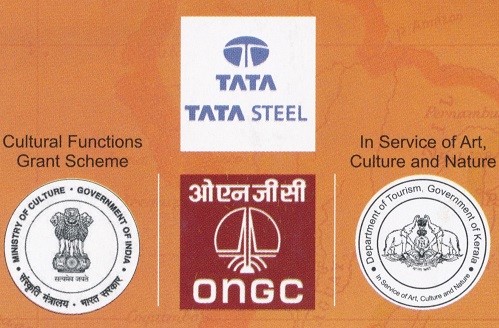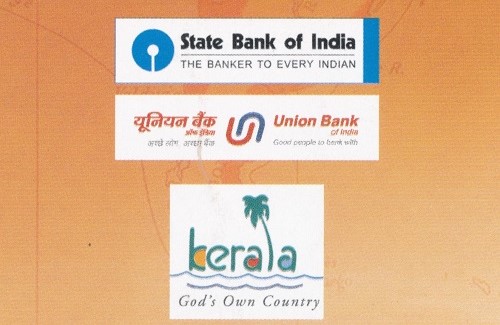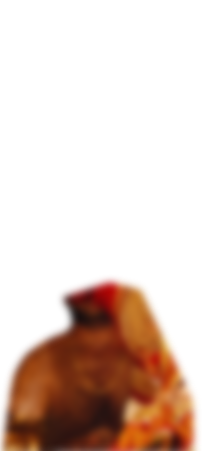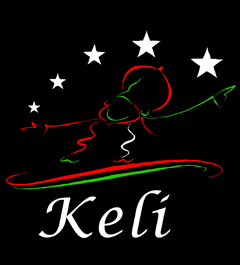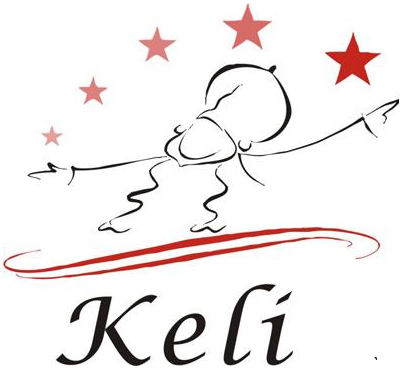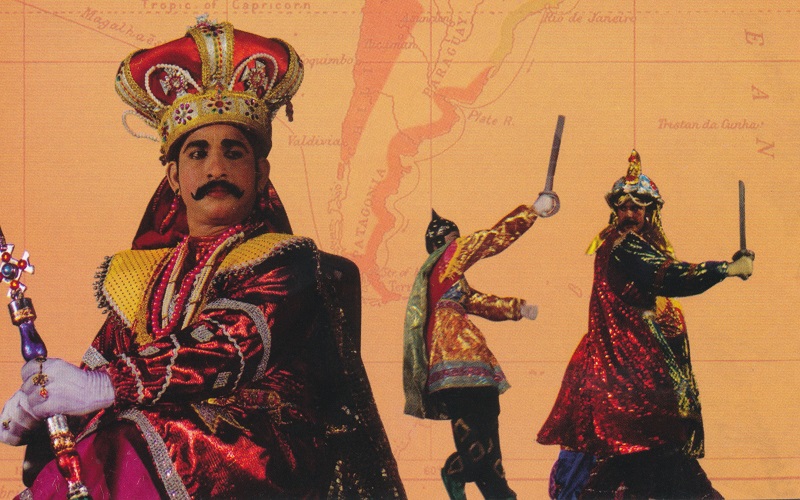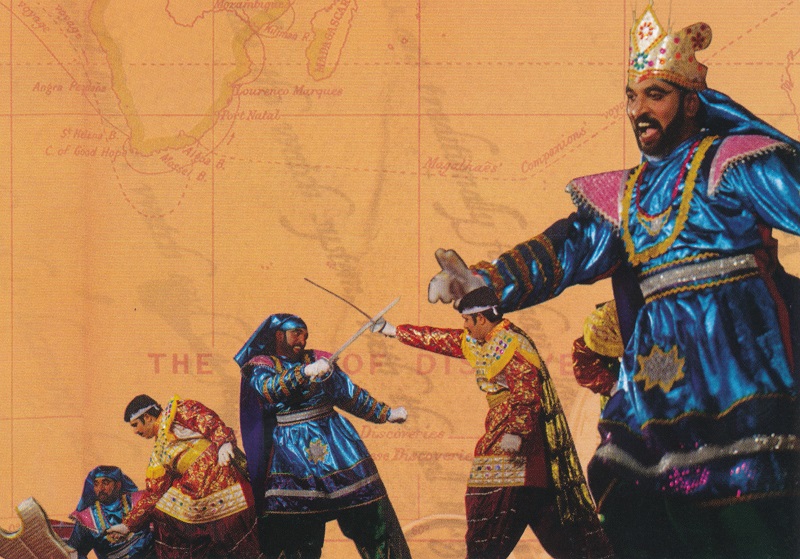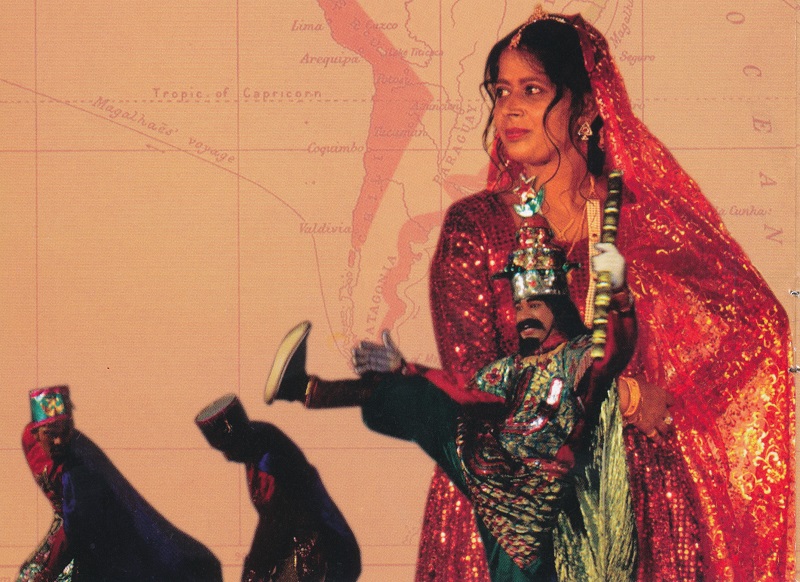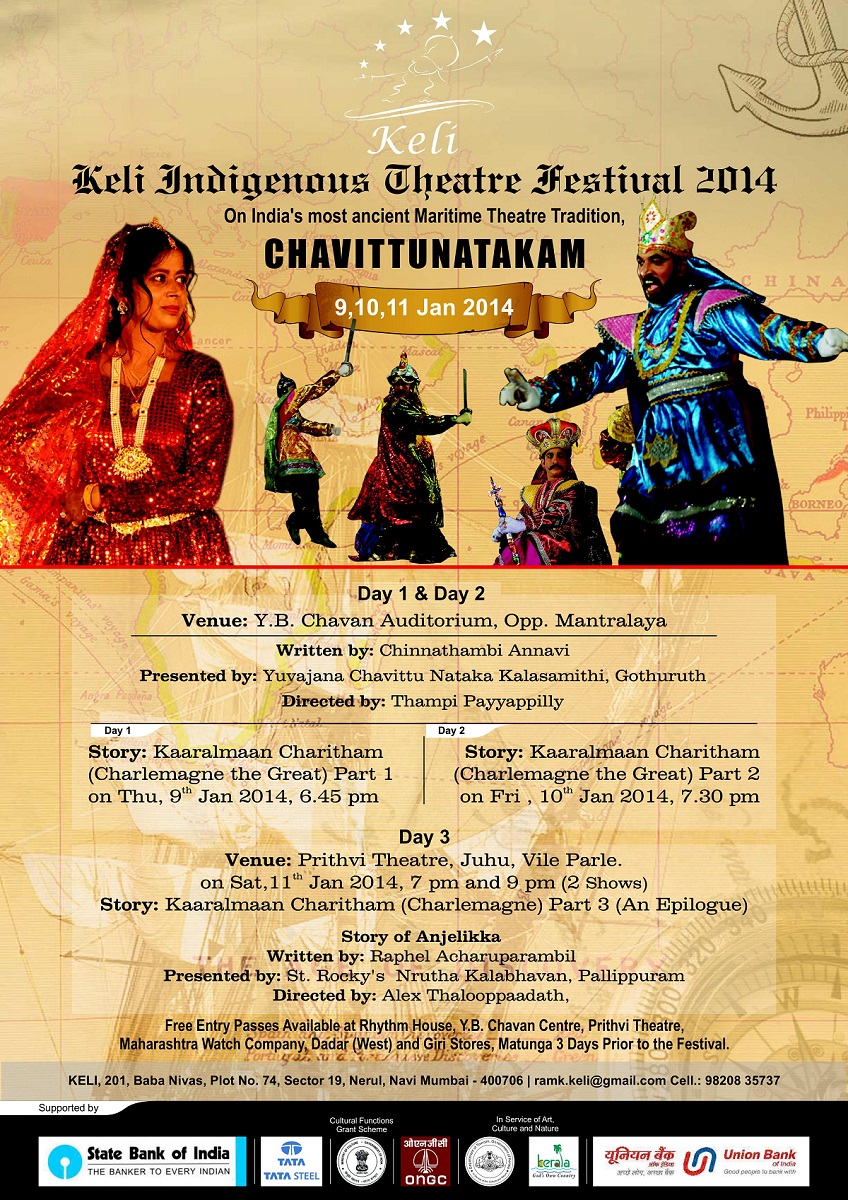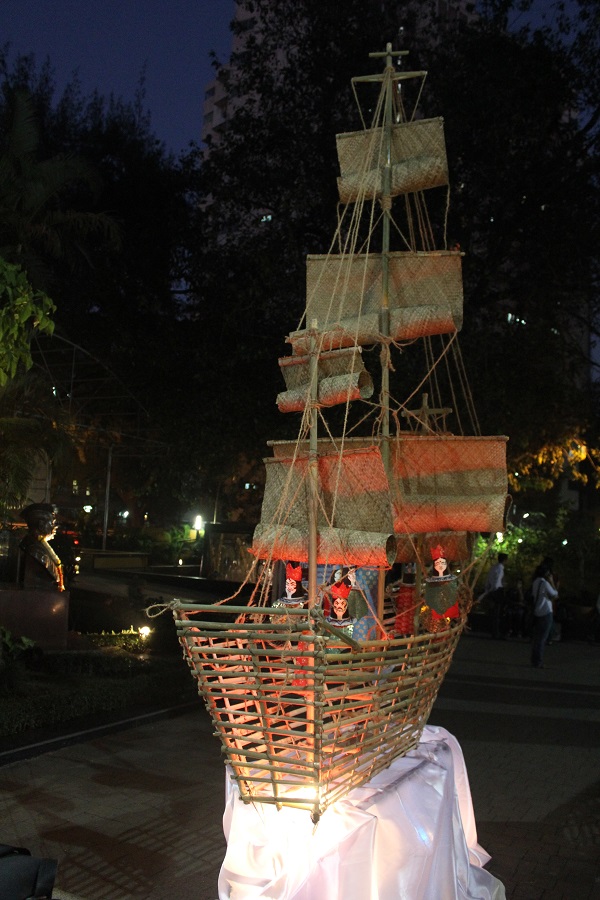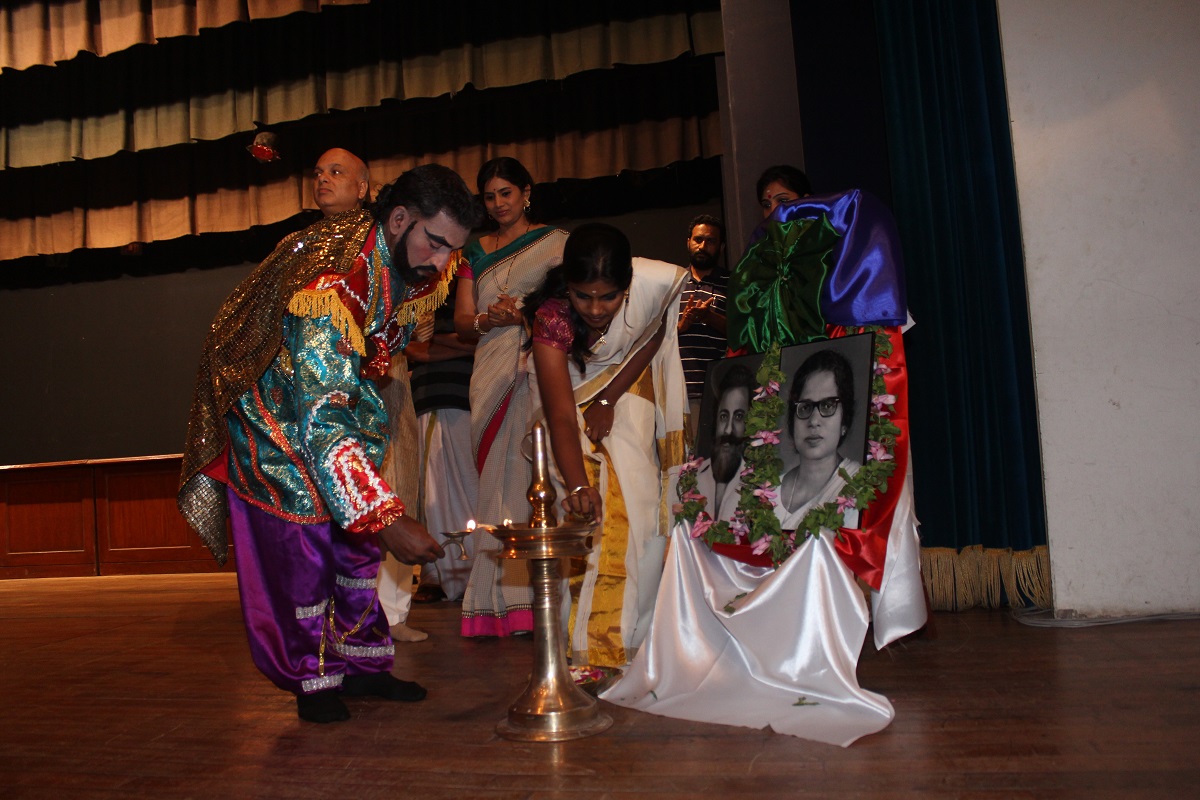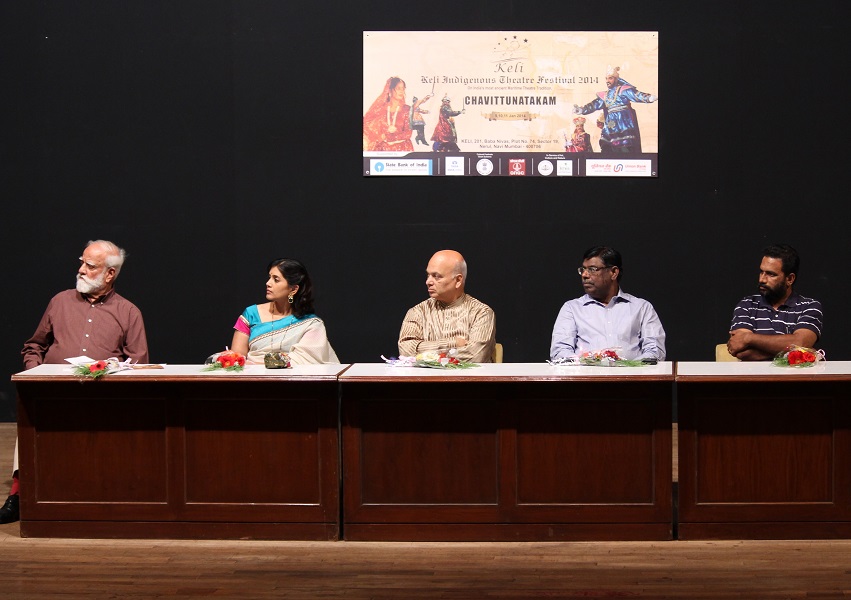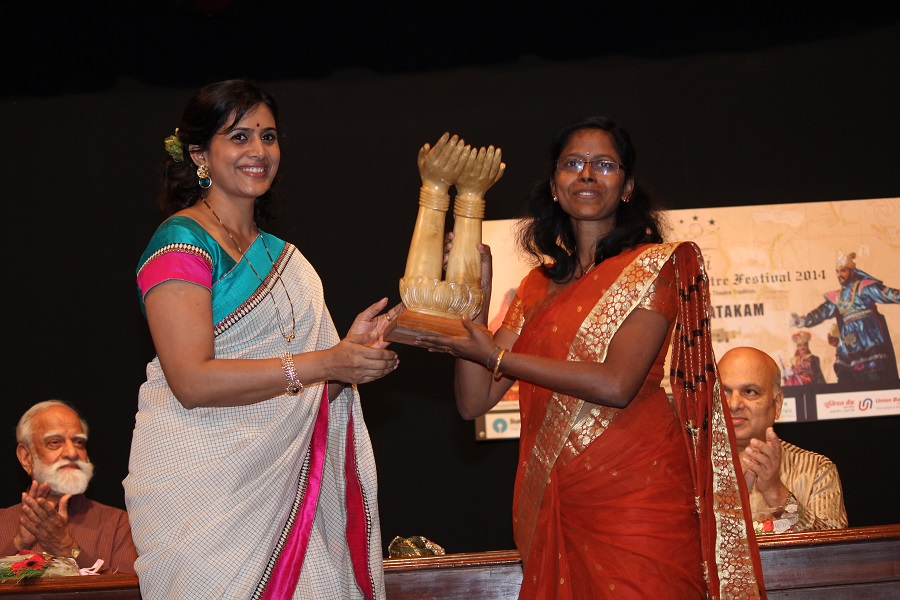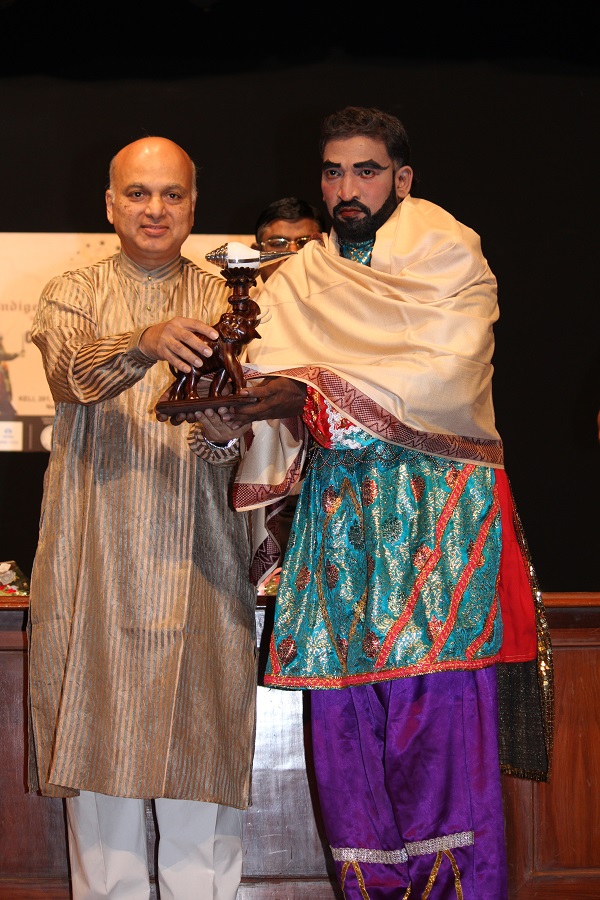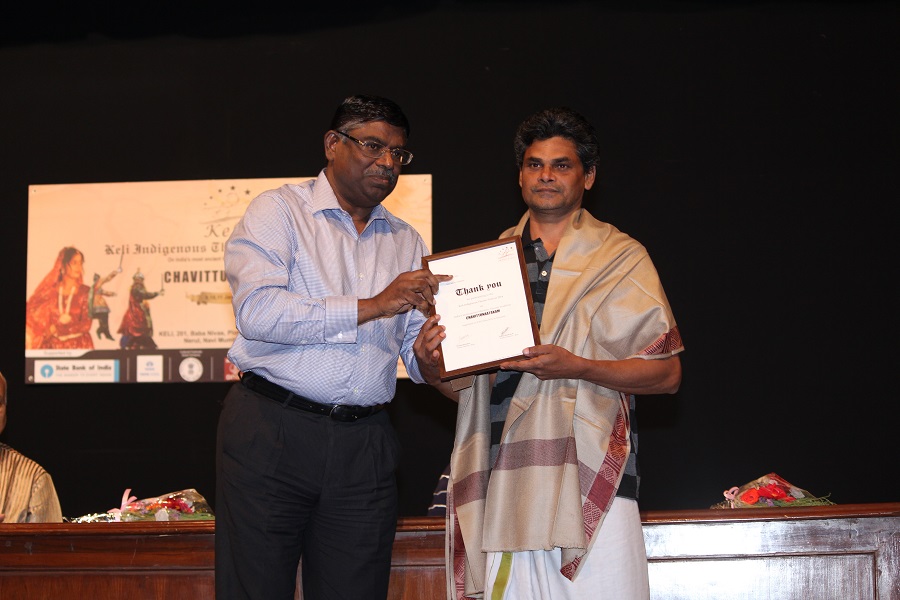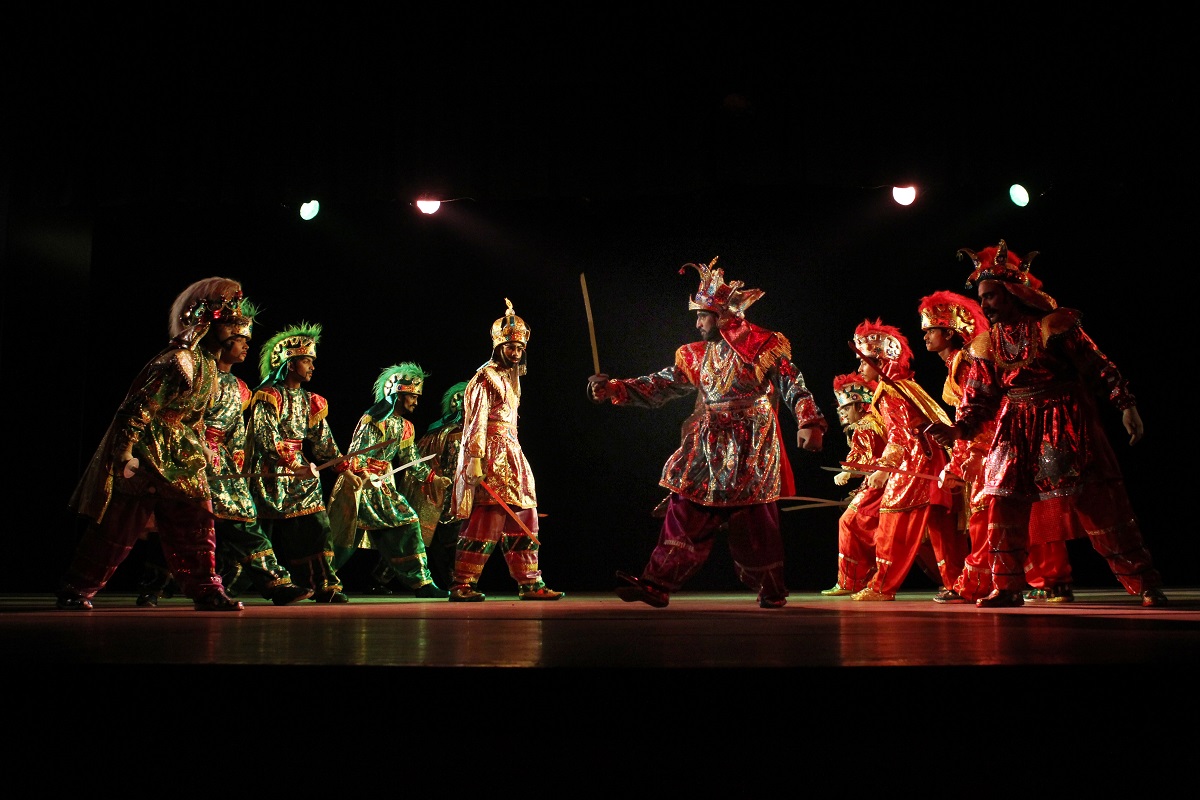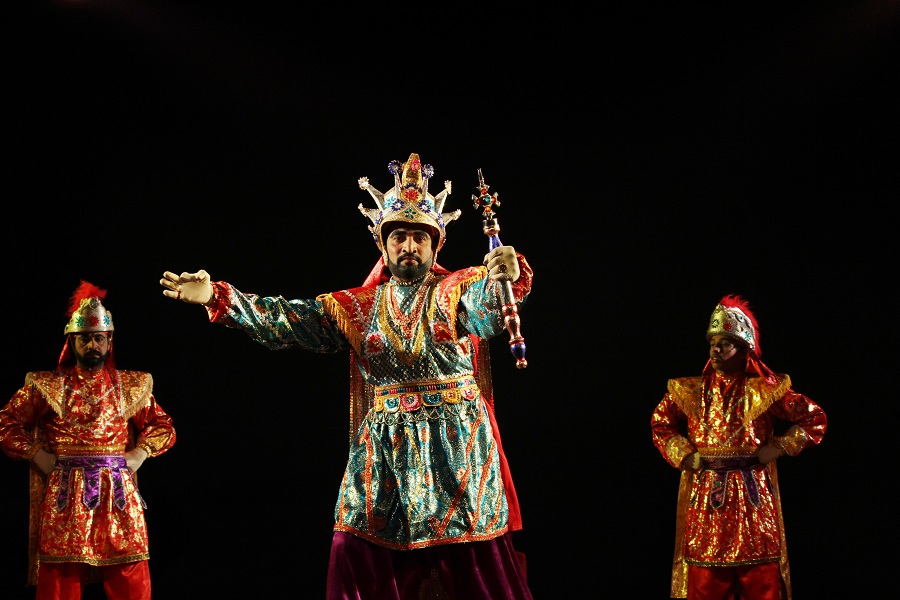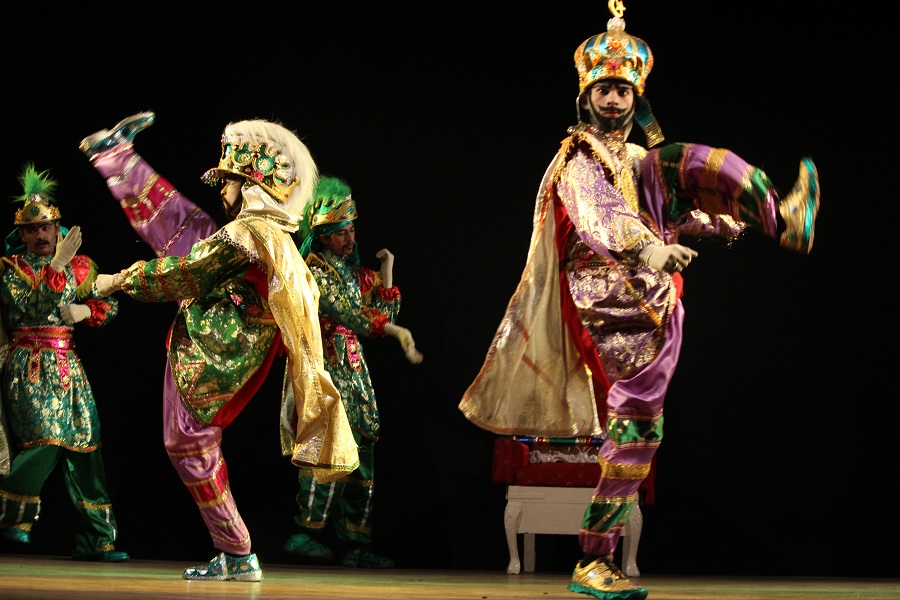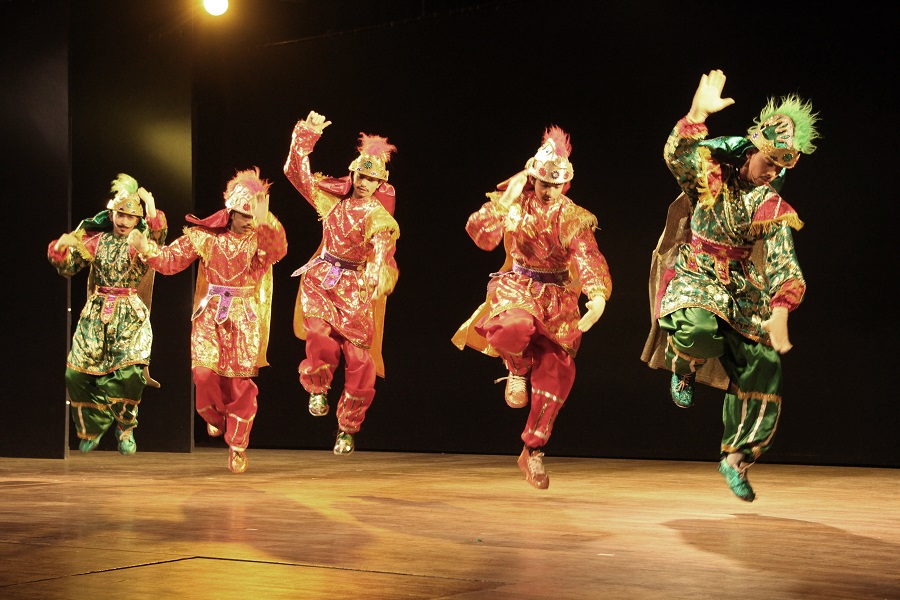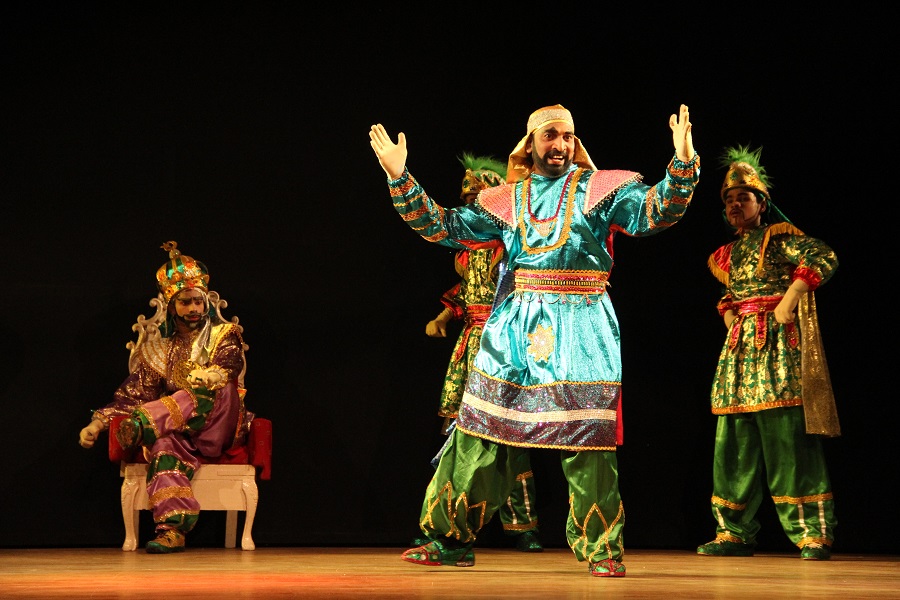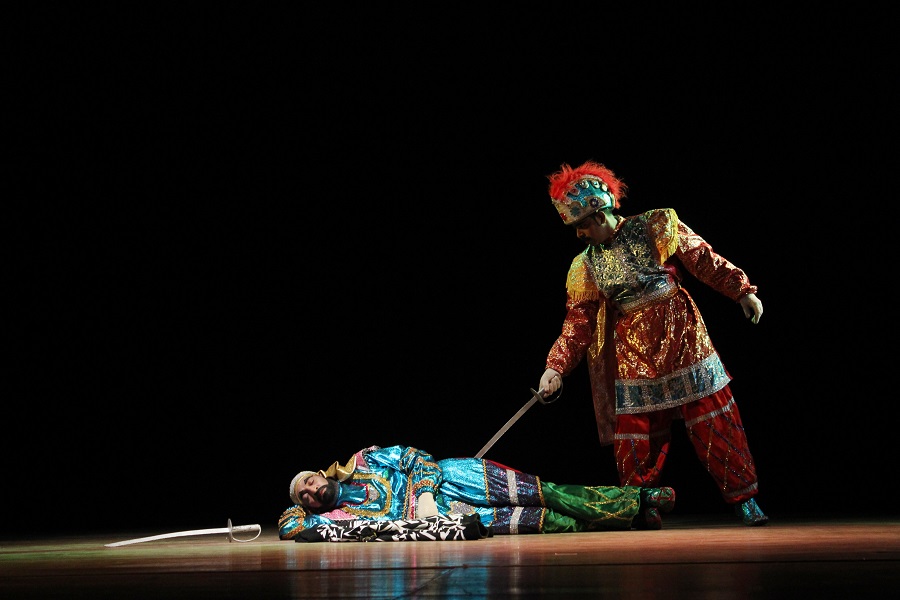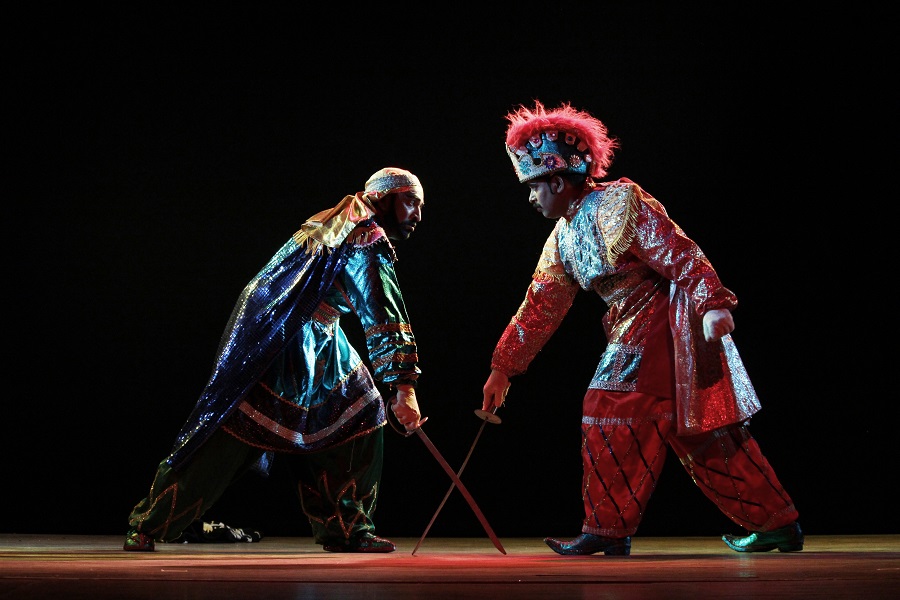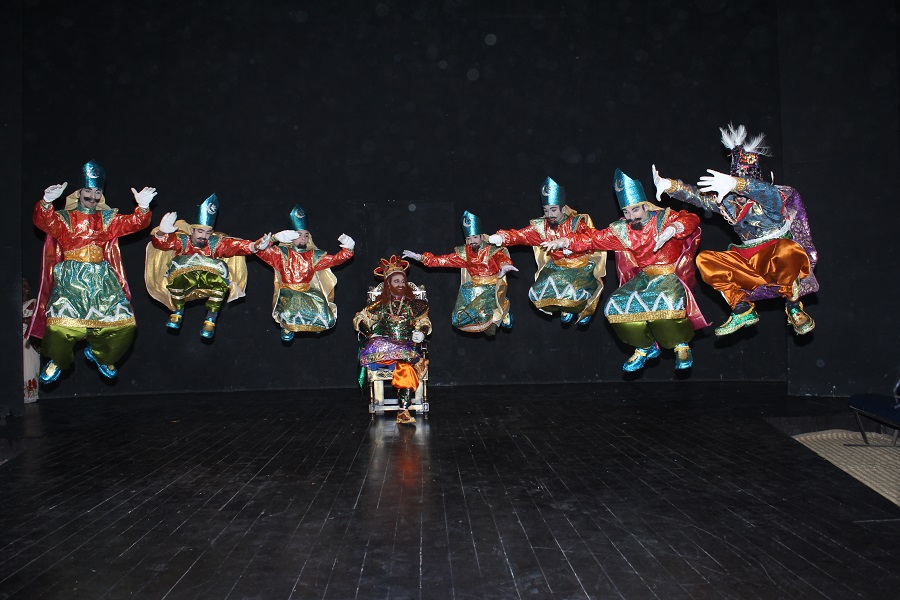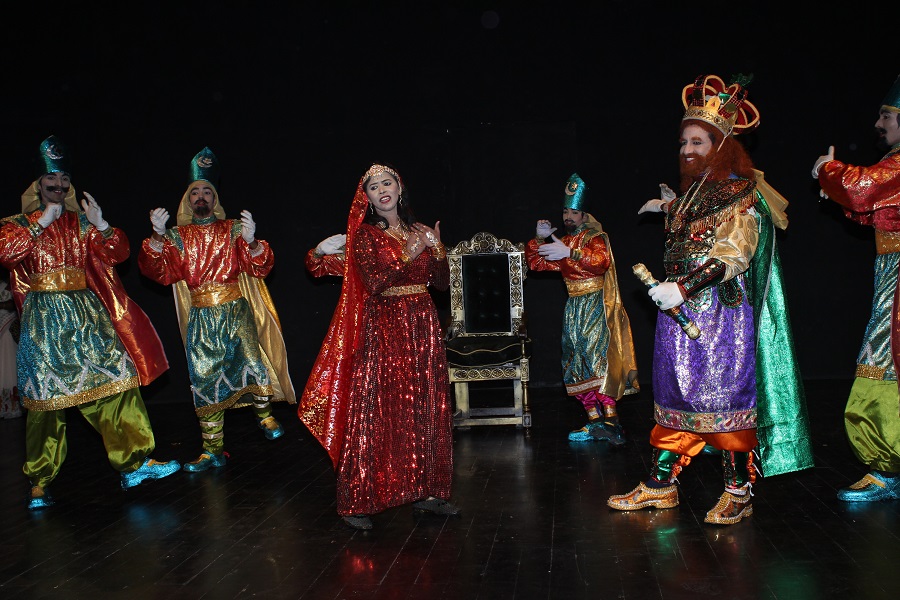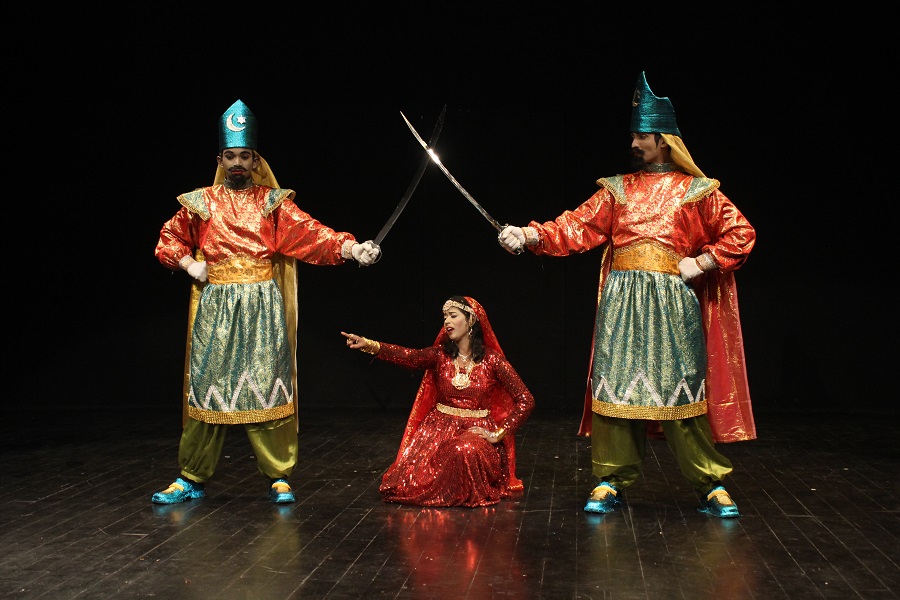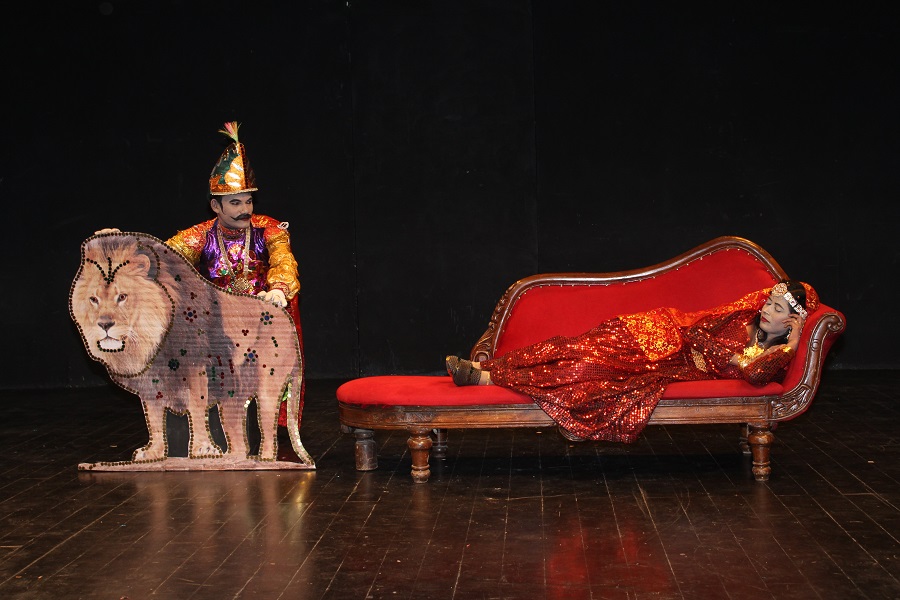Presents
Keli Indigenous Theatre Festival 2014
(On India's most Ancient Maritime Theatre Tradition)
CHAVITTUNAATAKAM
9,10,11 January 2014
Dear Art Lovers,
The year 2014 marks the 22nd anniversary of Keli and its continuing pursuit of excellenoe the traditonal art forms of Kerala. To mark this joyous occasion Keli has organised three day festival of an ancient fascinating theatre tradition which emerged in the 15th century in Kerala Chavittu Naatakam. It was initiated by impulses originating abroad but was also powerfully influenced by the tradition indigenous to Kerala.
The influence of the sea had a profound effect on the history of India in general and Kerala in particular. Around the 15th century, the Portuguese began to dominate the eastern shipping trade culminating in Vasco Da Garna's arrival in Kozhikode in 1498. Following this visit Portuguese missionaries came to Kerala in the sixteenth century. These missionaries were instrumental in introducing Chavittu Naatakam in Kerala.
Human life is incomplete and impossible without cultural identity, which is the essence of human dignity.Chavittu Naatakam was an artistic attempt by the migrants to fill the vacuum in their cultural life by introducing new forms of an with which they were familiar. The original libretto was by Christian missionaries, most of them Europeans, who remembered the European operatic tradition and felt the urge to create something like it in their new milieu. Chavittu Naatakam has thus a significant place in the maritime art history of lndia. It is a pure maritime art in its origin, content, costumes, its performance space, life style of its practitioners, nature of the audience and the society which preserved these art forms for many centuries. However, this art form was not completely transplanted in its pure European form, but instead they merged with local performance modes. The result was a new native theatre form with stories drawn from Christian legend, western operatic costumes, all aesthetic elements of European opera, with the addition of facial expressions which is unique to the Indian tradition. The martial traditions of Kerala infiltrated powerfully into Chavittu Naatakam as indeed in Kerala's Kathakali. ln fact, Chavittu here means the rhythmic steps which accompany the recitation of the lines of the libretto, producing resonant sounds to accentuate dramatic situations. Foot- Stamping dance, fighting and fencing are essential parts of Chavittu Naatakam.
From ancient times, cultural arts have two forms: folk and classical. The classical arts were for the aristocrats, whereas folk art remains as the life-expressions of every community. Moreover, the classical arts are performed and enjoyed by only a select few, but in the folk art the whole community contributes and participates, hence they are more indigenous in nature. Chavittu Naatakam is more like a folk art form, in many of its social, aesthetic, and structural elements. it became popular in and around the coastal areas of Kochi. Fisher-folk of this region were the main performers, practitioners and protectors of this art form.
Chvittu Naatakam has lots of western influence in the costume and stage properties. Colour is achieved by the use of brilliant feathers on the helmets of the soldiers, whose armour is distinctly Roman. The costumes, typically for a play in the ,Chavittu Naatakam tradition, are usually made of velvet, silk, and kasavu (gold or silver lace), again with brilliant effect. The emperor enters in regal robes with a dazzling pearl-studded crown and sceptre, and is escorted by his soldiers in Roman helmets and armour. lt is an impressive sight.
Chavittu Naatakam is famous for Nrityabhinaya, a quality which denotes the manner in which the actors sing their words, move with strict dance, steps according to the music, convey the meanings of the song with hand gestures as in opera, and express the appropriate Bhaava (mental state) with facial expressions. Most of the gestures that are used seem at first not related to classical traditions, but on closer examination we find that they have strong similarities to some of the Mudraas of South Indian dance traditions
The rhythm involved in Chavittu Naatakam is derivedfrom the existing native traditional and classical art forms. Chavittu Naatakam as an art form derives its name from the emphasis placed on foot movements- Chavittu, foot stamping as in dance and Naatakam, dance drama.
Chavittu Naatakam attributes great importance to the performance manual(Chuvati) which codifies everything from the rituals performed from the beginning of rehearsals up to the actual performance. The plays were probably written originally in Chentamil (ancient Tamil), for the texts in circulation at present show a mixture of Tamil and Malayalam. The Chuvatis are considered by Aashaans (Masters) to be their personal property to be handed down orally through heredity, and hence they are never shared with others or printed. The performers consider the traditional performance manual (Chuvatis) as divine property and handle them with utmost reverence.
The most celebrated play in this genre is undoubtedly Kaaralmaan Naatakam. The drama focuses on the heroism of the Emperor Charlemagne the Great, his men and nephew, the legendary Roland. This story was popular in southern Europe up to the middle of the twentieth century.
Chavittu Naatakam has a significant place in the art history of the world. A pattern of culture that migrated from across the sea; a theatre form that was nurtured and developed by the coastal people; a tradition of drama written directed and enacted by the same coastal people; a theatre movement with performance spaces, created at the coastal villages from out of meagre donations collected from the villagers; an artistic emanation which draws its audiences from the same coastal people, Chavittu Naatakam is truly the most authentic ancient maritime theatre tradition in every sense of the term. It is the only existing ancient maritime theatre tradition in India which has survived for over five centuries. Yet, no serious research or academic studies on this fascinating art form have been undertaken by individual scholars or institutions. Neither the academies nor the state patrons have extended significant attention towards preserving, developing and propagating this tradition. The enthusiastic artists, passionate audience, the support and dedication of a very few art lovers still keep this art form vibrantly alive.
Keli's attempt is to propagate the artistic strength and historic significance of this unique Maritime art form to a wider audience in the country. This is for the first time this Theatre tradition is visiting Mumbai.
We cordially invite all art lovers of Mumbai to share the joy and excitement of this unique festival which presents in three parts, spread over three days, the valorous story of- Emperor Kaaralmaan (Charlemagne the Great) who ruled over France in the 8th century A.D. .
K. Subhaschandran
The year 2014 marks the 22nd anniversary of Keli and its continuing pursuit of excellenoe the traditonal art forms of Kerala. To mark this joyous occasion Keli has organised three day festival of an ancient fascinating theatre tradition which emerged in the 15th century in Kerala Chavittu Naatakam. It was initiated by impulses originating abroad but was also powerfully influenced by the tradition indigenous to Kerala.
The influence of the sea had a profound effect on the history of India in general and Kerala in particular. Around the 15th century, the Portuguese began to dominate the eastern shipping trade culminating in Vasco Da Garna's arrival in Kozhikode in 1498. Following this visit Portuguese missionaries came to Kerala in the sixteenth century. These missionaries were instrumental in introducing Chavittu Naatakam in Kerala.
Human life is incomplete and impossible without cultural identity, which is the essence of human dignity.Chavittu Naatakam was an artistic attempt by the migrants to fill the vacuum in their cultural life by introducing new forms of an with which they were familiar. The original libretto was by Christian missionaries, most of them Europeans, who remembered the European operatic tradition and felt the urge to create something like it in their new milieu. Chavittu Naatakam has thus a significant place in the maritime art history of lndia. It is a pure maritime art in its origin, content, costumes, its performance space, life style of its practitioners, nature of the audience and the society which preserved these art forms for many centuries. However, this art form was not completely transplanted in its pure European form, but instead they merged with local performance modes. The result was a new native theatre form with stories drawn from Christian legend, western operatic costumes, all aesthetic elements of European opera, with the addition of facial expressions which is unique to the Indian tradition. The martial traditions of Kerala infiltrated powerfully into Chavittu Naatakam as indeed in Kerala's Kathakali. ln fact, Chavittu here means the rhythmic steps which accompany the recitation of the lines of the libretto, producing resonant sounds to accentuate dramatic situations. Foot- Stamping dance, fighting and fencing are essential parts of Chavittu Naatakam.
From ancient times, cultural arts have two forms: folk and classical. The classical arts were for the aristocrats, whereas folk art remains as the life-expressions of every community. Moreover, the classical arts are performed and enjoyed by only a select few, but in the folk art the whole community contributes and participates, hence they are more indigenous in nature. Chavittu Naatakam is more like a folk art form, in many of its social, aesthetic, and structural elements. it became popular in and around the coastal areas of Kochi. Fisher-folk of this region were the main performers, practitioners and protectors of this art form.
Chvittu Naatakam has lots of western influence in the costume and stage properties. Colour is achieved by the use of brilliant feathers on the helmets of the soldiers, whose armour is distinctly Roman. The costumes, typically for a play in the ,Chavittu Naatakam tradition, are usually made of velvet, silk, and kasavu (gold or silver lace), again with brilliant effect. The emperor enters in regal robes with a dazzling pearl-studded crown and sceptre, and is escorted by his soldiers in Roman helmets and armour. lt is an impressive sight.
Chavittu Naatakam is famous for Nrityabhinaya, a quality which denotes the manner in which the actors sing their words, move with strict dance, steps according to the music, convey the meanings of the song with hand gestures as in opera, and express the appropriate Bhaava (mental state) with facial expressions. Most of the gestures that are used seem at first not related to classical traditions, but on closer examination we find that they have strong similarities to some of the Mudraas of South Indian dance traditions
The rhythm involved in Chavittu Naatakam is derivedfrom the existing native traditional and classical art forms. Chavittu Naatakam as an art form derives its name from the emphasis placed on foot movements- Chavittu, foot stamping as in dance and Naatakam, dance drama.
Chavittu Naatakam attributes great importance to the performance manual(Chuvati) which codifies everything from the rituals performed from the beginning of rehearsals up to the actual performance. The plays were probably written originally in Chentamil (ancient Tamil), for the texts in circulation at present show a mixture of Tamil and Malayalam. The Chuvatis are considered by Aashaans (Masters) to be their personal property to be handed down orally through heredity, and hence they are never shared with others or printed. The performers consider the traditional performance manual (Chuvatis) as divine property and handle them with utmost reverence.
The most celebrated play in this genre is undoubtedly Kaaralmaan Naatakam. The drama focuses on the heroism of the Emperor Charlemagne the Great, his men and nephew, the legendary Roland. This story was popular in southern Europe up to the middle of the twentieth century.
Chavittu Naatakam has a significant place in the art history of the world. A pattern of culture that migrated from across the sea; a theatre form that was nurtured and developed by the coastal people; a tradition of drama written directed and enacted by the same coastal people; a theatre movement with performance spaces, created at the coastal villages from out of meagre donations collected from the villagers; an artistic emanation which draws its audiences from the same coastal people, Chavittu Naatakam is truly the most authentic ancient maritime theatre tradition in every sense of the term. It is the only existing ancient maritime theatre tradition in India which has survived for over five centuries. Yet, no serious research or academic studies on this fascinating art form have been undertaken by individual scholars or institutions. Neither the academies nor the state patrons have extended significant attention towards preserving, developing and propagating this tradition. The enthusiastic artists, passionate audience, the support and dedication of a very few art lovers still keep this art form vibrantly alive.
Keli's attempt is to propagate the artistic strength and historic significance of this unique Maritime art form to a wider audience in the country. This is for the first time this Theatre tradition is visiting Mumbai.
We cordially invite all art lovers of Mumbai to share the joy and excitement of this unique festival which presents in three parts, spread over three days, the valorous story of- Emperor Kaaralmaan (Charlemagne the Great) who ruled over France in the 8th century A.D. .
K. Subhaschandran
Artistic Director & Project Co- ordinator
Ramachandran. K
Festival Director
Cell: +919820835737
ramk.keli@gmail.com
KELI. 201, Baba Niwas, Plot No. 74,
Sector 19, Nerul, Navi Mumbai 400706
www: keliindia.org
Day 1
Thursday, 9th January 2014, at Y.B. Chavan Centre, Mumbai at 6.45 pm
Inagural Function
Dedication:
Dedicating the festival to the memory of Guru Georgekutty Aasaan and Guru Sabeena Raphi
Felicitation:
Presenting the promising artist of the year award to Sherly Tomy
Presenting the best academician of the year award to Joy Gothuruth
Felicitating Antony Kadakath and Alex Thalooppaadam
Presenting Silver Conches to Guru Anirudhan and Guru Thampi Payyappilly
Performance of Chavittu Naatakam
Story: Kaaralmaan Charitham (Charlemagne the Great) Part 1Written by: Chinnathambi Annavi
Presented by: Yuvajana Chavittu Nataka Kalasamithi, Gothuruth
Directed by: Thampi Payyappilly (Chavittu Naatakam Performance)
Synopsis: The participating artistes enter the stage, pay their obeisance to the Goddess Nature and audience and narrate the story briefly. The court of Emperor Charlemagne the Great-After listening to the news from the realm, Charlemagne sends a messenger to Turkey with a message conveying his decision to wage a war with Turkey. Next is the court of the king of Turkey, Al Biranth. Charlemagne's messenger arrives and hands over the message about the impending war to the king. Al Biranth holds consultations with his minister and the commander-in- chief of the army about the war, Emperor Charlemagne after offering prayers to God, sets out army to begin the war with Turkey.
Day 1
Friday, 10th January 2014, at Y.B. Chavan Centre, Mumbai at 6.45 pm
Performance of Chavittu Naatakam
Story: Kaaralmaan Charitham (Charlemagne the Great) Part 2Written by: Chinnathambi Annavi
Presented by: Yuvajana Chavittu Nataka Kalasamithi, Gothuruth
Directed by: Thampi Payyappilly (Chavittu Naatakam Performance)
Synopsis: The participating artistes enter the stage pay their obeisance to the Goddess Nature and audience and narrate the story briefly. The Court of the King of Turkey Al Biranth-his son Perabras is angry at the defeat of his father at the hands of Charlemagne, seeks permission from the king to fight against Charlemagne. Next is the court scene of Charlremagne. Charlemagne directs his nephew Roland to face Perabras who had arrived in France with his army. Roland in defiance of the king refuses to go to the war. Charlemagne who is already wounded in the earlier battle decides to go to war himself. A brave soldier of Charlemagnes army, Oliver goes to the king and asks for his permission to go and fight against Perabras in order to protect the honour of the country. Pleased with the Qliver's self-confidence and patriotism, Charlemagne gives him the permission asked for. Oliver faces Perabras in the battlefield. Oliver challenges Perabras for a duel with him. Perabras lifts his heavy armour off his chest and mockingly challenges Oliver to engage in a duel with him.
Day 3
Saturday, 11th January 2014,
at Prithvi Theatre, Juhu, Ville Parle at 7 pm and 9 pm (2 Shows)
Performance of Chavittu Naatakam
Story: Kaaralmaan Charitham (Charlemagne the Great) Part 3 (An Epilogue)Story of Anjelikka
Written by: Raphael Acharuparambil
Presented by: St. Rocky's Nrutha Kalabhavan, Pallippuram
Directed by: Alex Thalooppaadath, disciple of late Guru Antony Charamkulam
Synopsis: Angelika was the beautiful and well- behaved daughter of Abdu Rahman, king of Turkey. The king's sister who was an astrologer predicts that Angelika would be attracted to and subjugated by someone belonging to the Christian faith. Abdu Rahman places Angelika under house arrest. Charlemagne's nephew Roland hears about the beauty of Angelika and decides to make her his own. Roland and his friend discuss the strategy to achieve this. Roland makes a golden lion and takes it stealthily to Angelika's room in the place. Angelika realises the depth of Roland's love for her and agrees to go with him to France. Roland frees her from arrest and both of them leave for France.
Chinnathambi Annavi
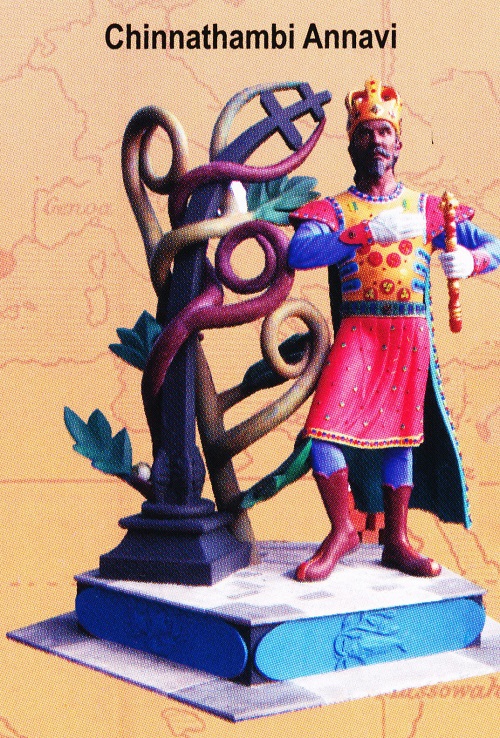
Chinnathambi Annavi is recognised as the very first playwright in the literay history of the Chavittu Naatakam tradition. lt is believed that he lived in the A 17th century AD. The authoritative documents about his life and work are only the plays that he authored. He was an utterly pious devotee of Jesus Christ. One legend about him describes how as he sang in a devotional trance in front of a cross, the cross bent towards him. The bent cross found in Mattanchery near Kochi even today is believed to be associated with this story. The Kochi Biennale Foundation which organised lndia's first Biennale at Kochi in 2012 had sponsored a sculpture of Chinnathambi Annavi and commissioned the well-known sculptor Anto Jose for the project. The sculpture to be unveiled in the village Of Gothuruth near Kochi which is the centre of the Chavittu Naatakam has just been completed. This is the one and only visual representation of the great artiste and playwright Chinnathambi Annavi available to the world of art.
Our Sincere Thanks to:
Ministry of Culture, Govt. of India, Dept. of Tourism, Govt. of Kerala, A.P. Anilkumar, Minister for Tourism, Govt of Kerala, Hibi Eaden M.L.A., V. Venu I.A.S., S. Harikishore I.A.S., Y.B. Ghavan Centre, Prithvi Theatre, C. P. Surendran, Venugopal, Yogesh J oshy, Pallav Bhatacharya, Venugopal, Kovilakath, Rajan, N.S. Muley, Mrs. Rekha Naik, V. S. Kundu I.A.S., Sonali Kulkarni, Narayani G.S., Kunal Kapoor, Sreekumar Kaimal, Surendrababu, Kesavan Pazhedam, Indhu Sager, SAC Gothuruth, Jijo John Puthezhath, Junoon, Sanjna Kapoor, Sameera Kapoor, Vijay Desai, Ayas, Saji, Santhosh Nair, Rajkurnar Gopalan
Printing Partner: Surendrababu
Travel Co ordination: Theatreconnect
Supported by:
